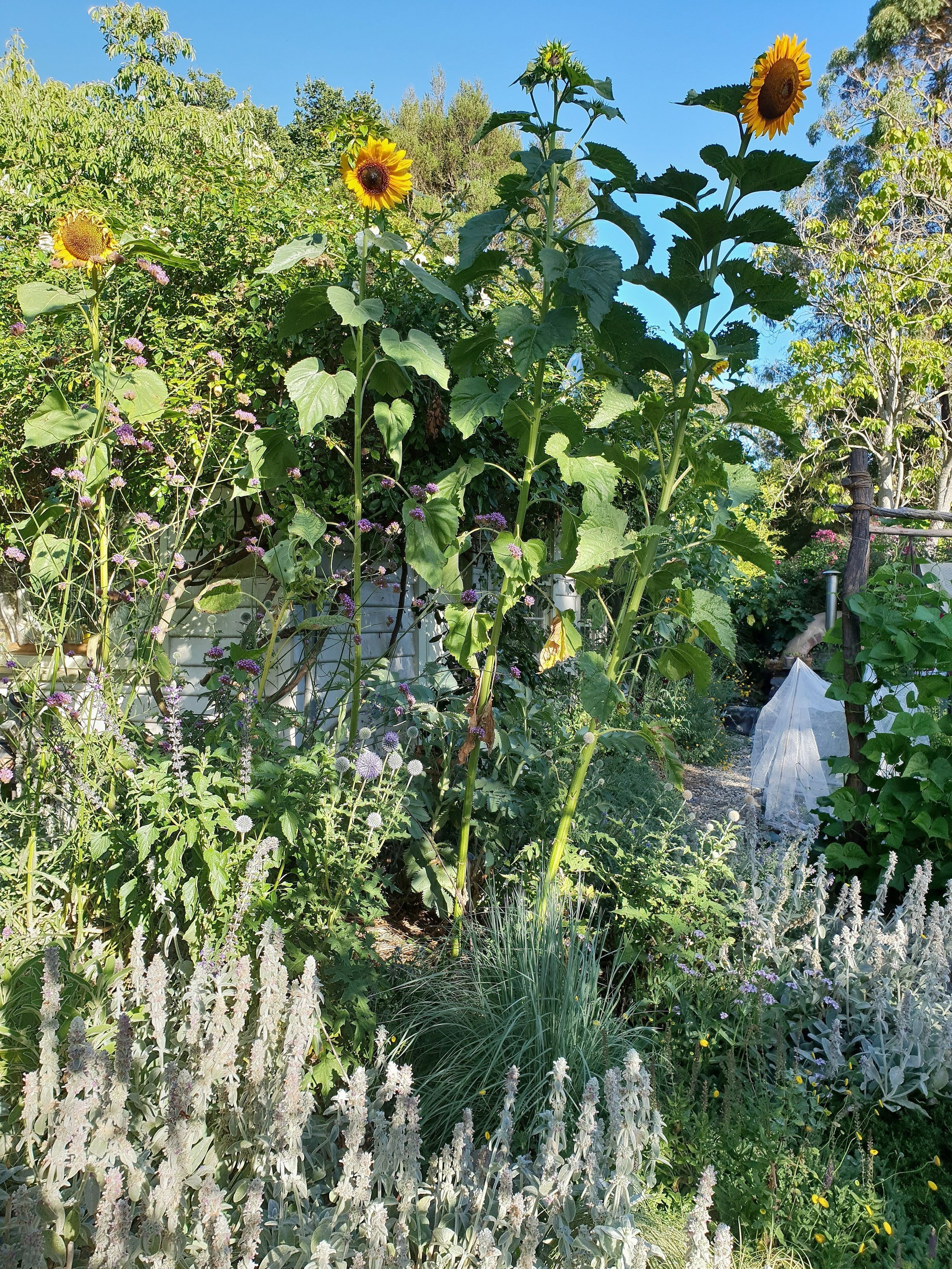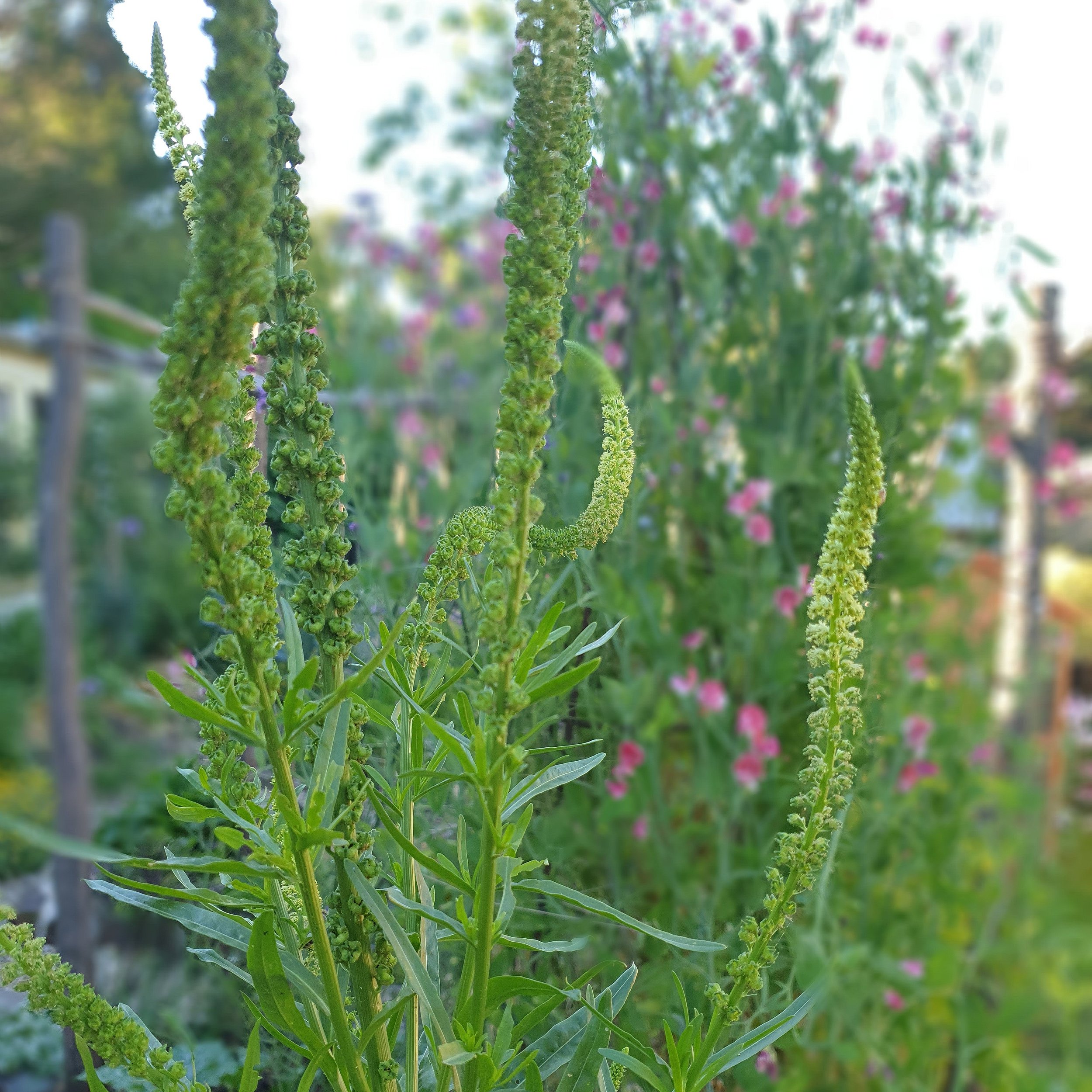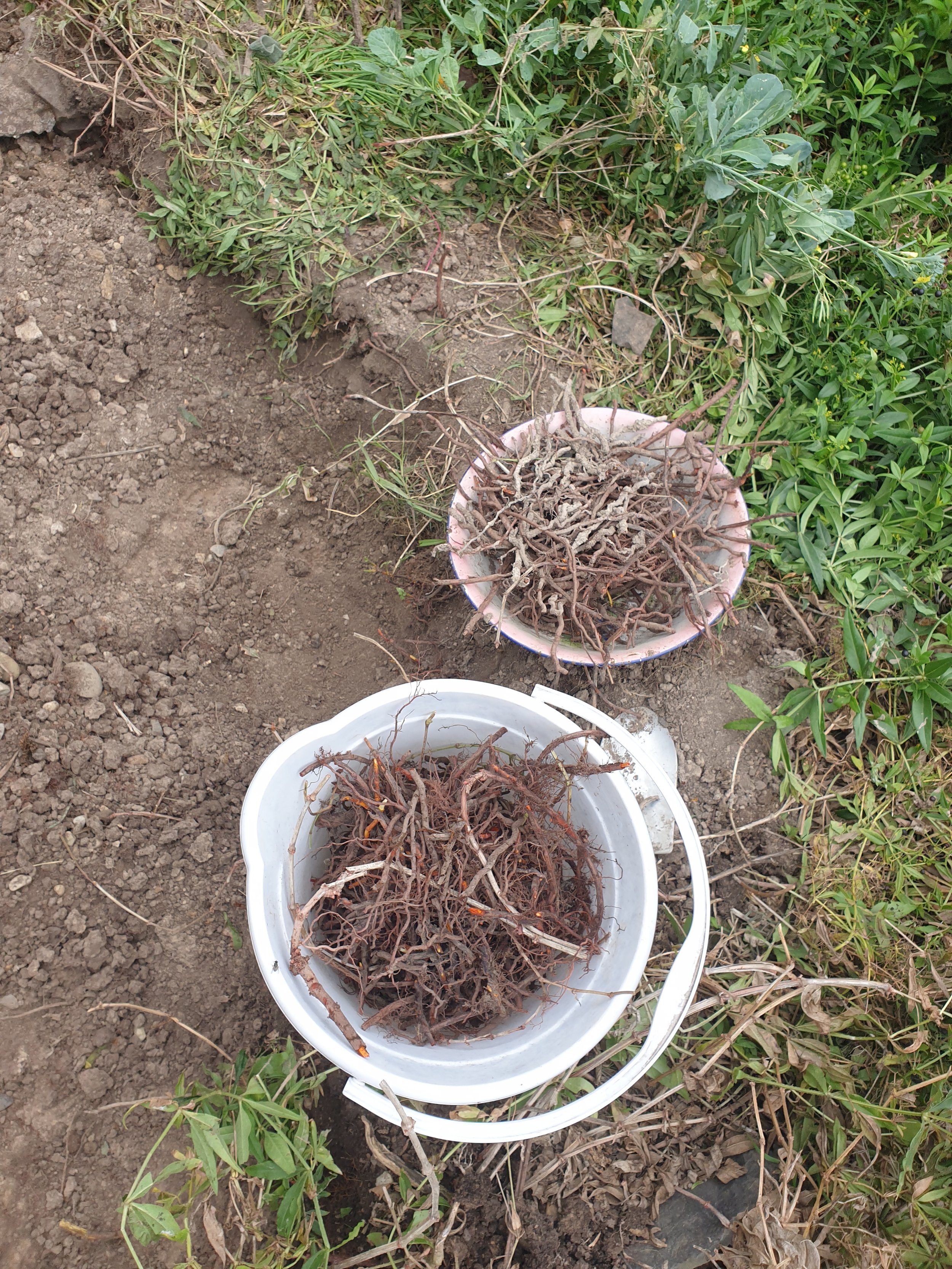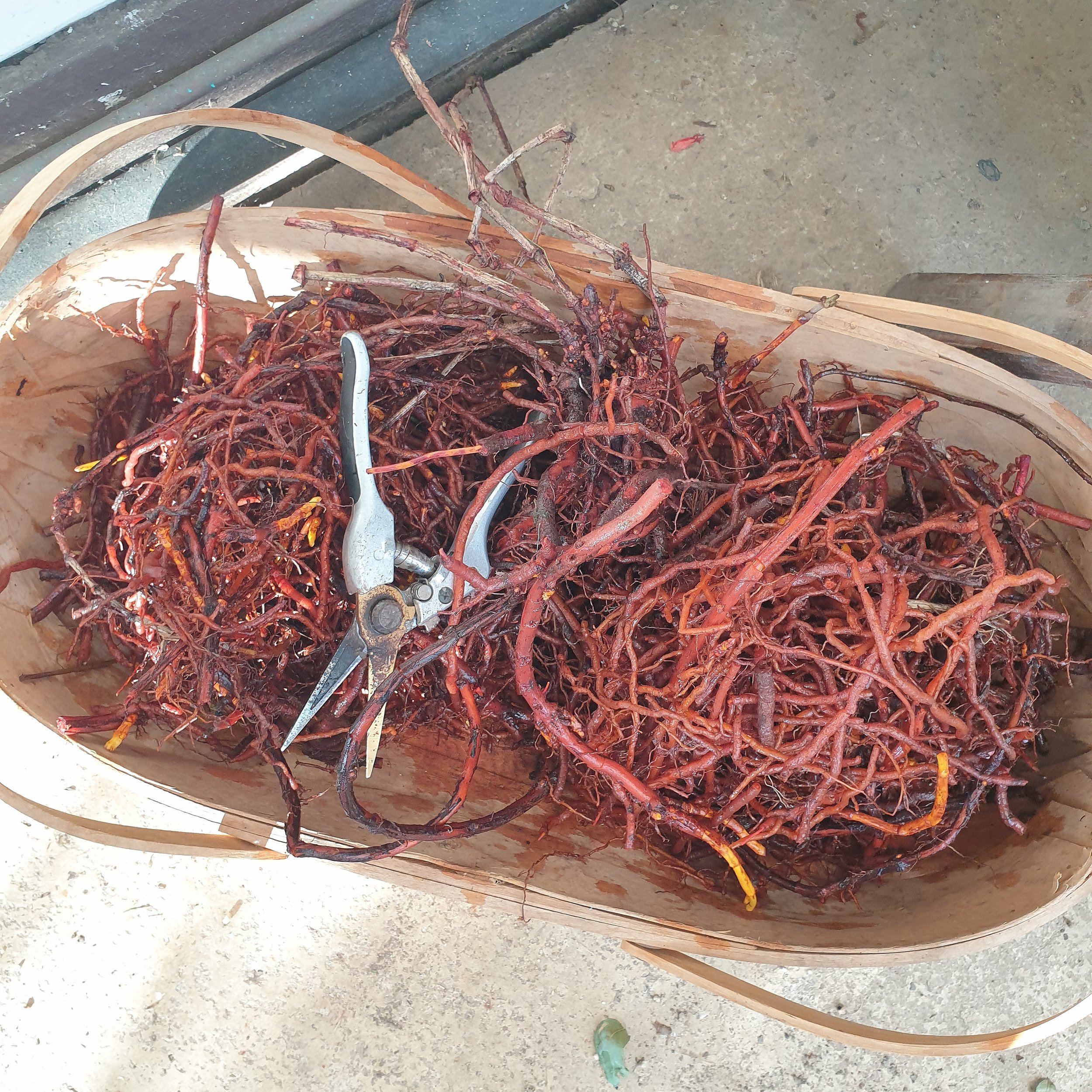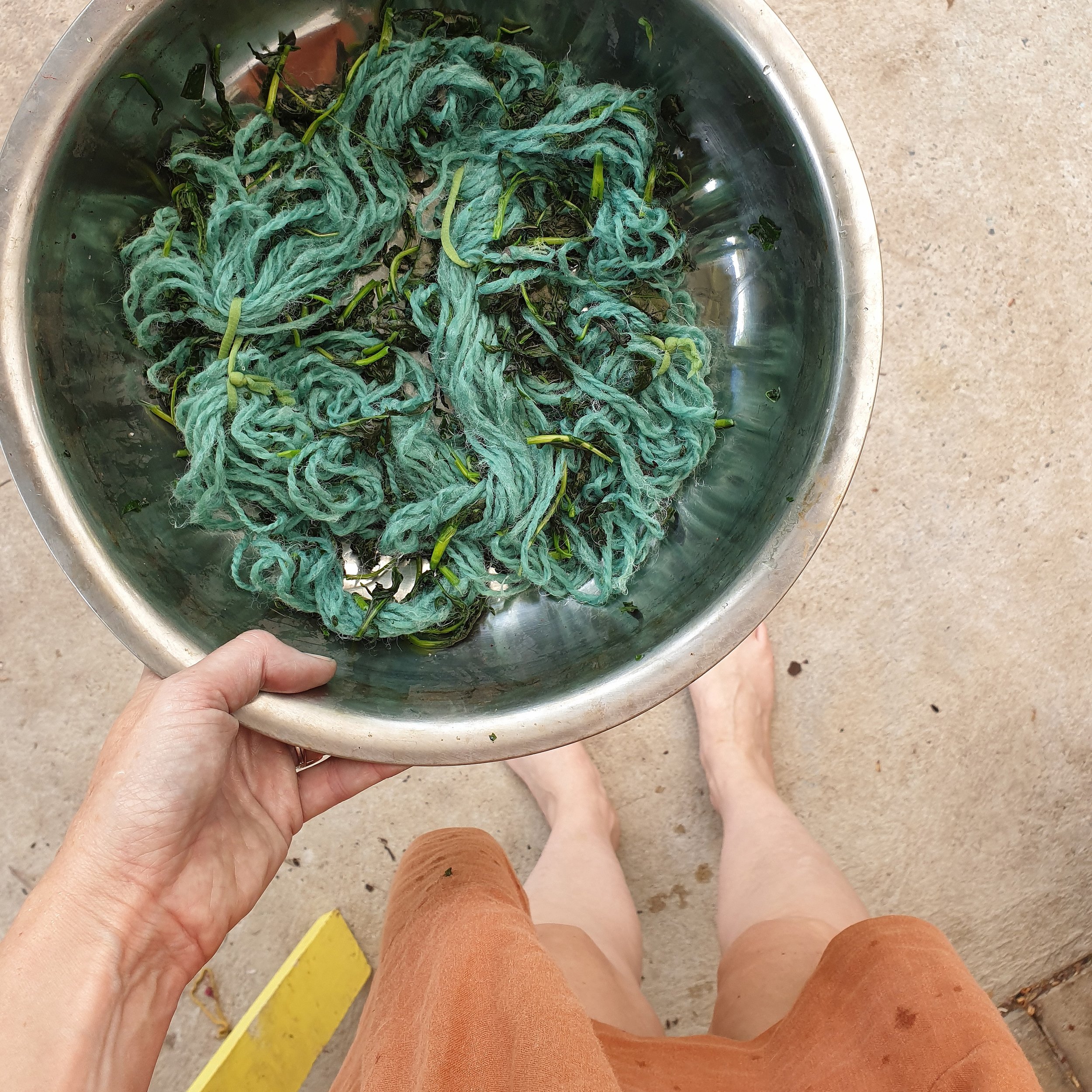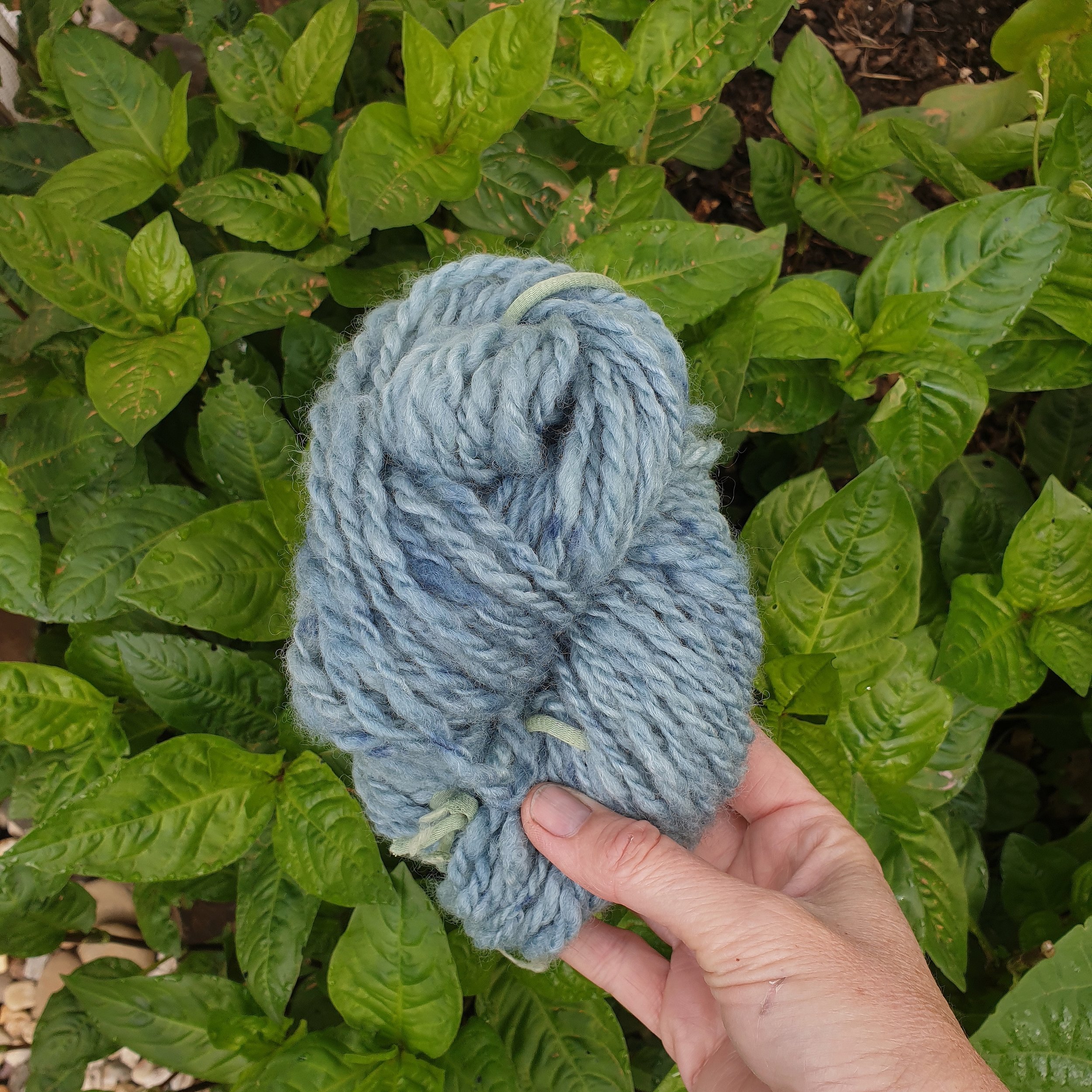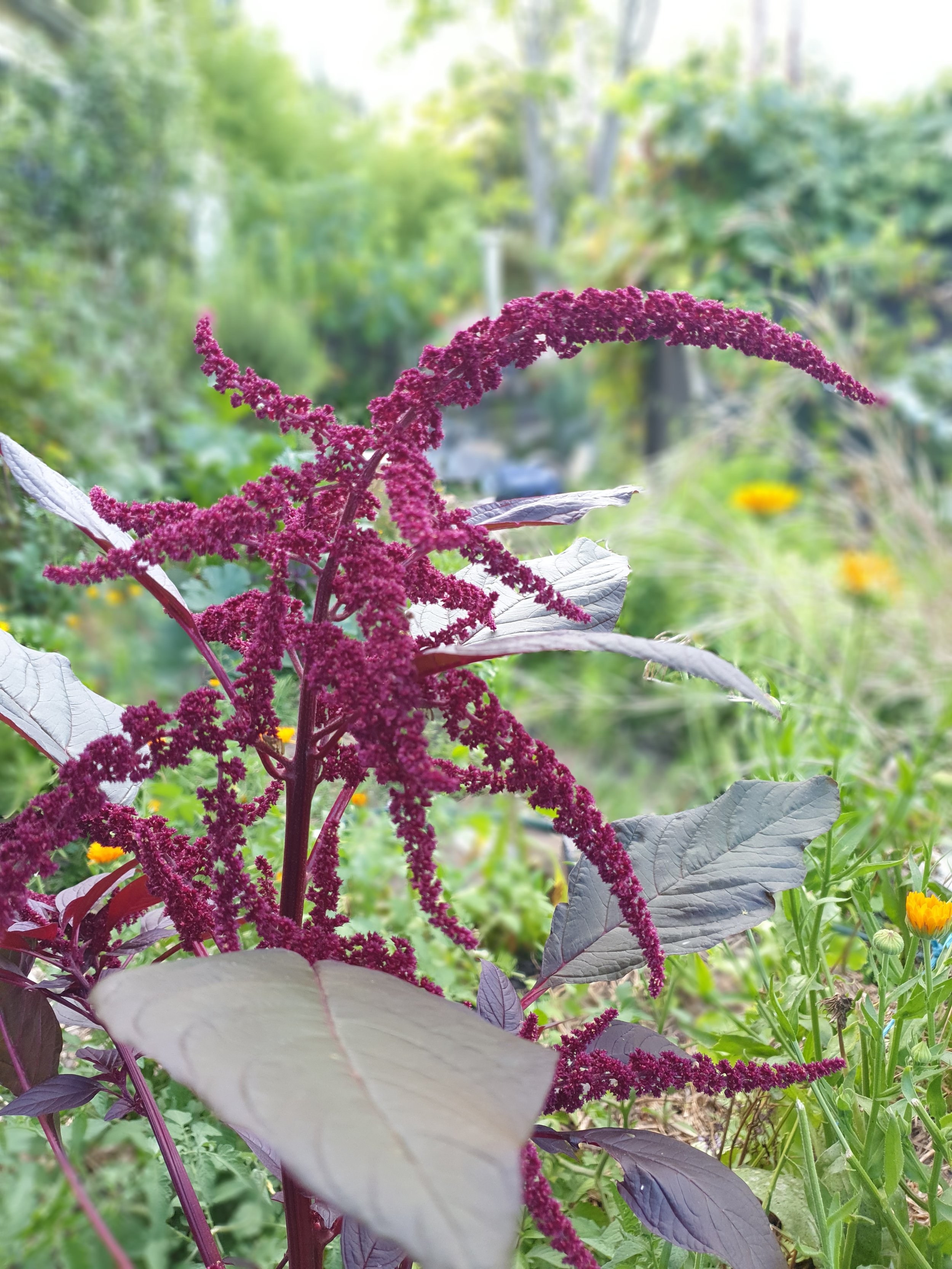Growing plants for colour at home
One of the most enjoyable parts of natural dyeing has been growing and experimenting with plants that produce dyes at home in my garden. Over the last decade I have trialled various plants with varying degrees of success. When experimenting with these plants it used to be enough to just extract a nice colour, but these days I am looking for colours that don’t fade or bleed as my fibres are sold and are not just for personal use. Most dye plants tend to be very easy to grow (in fact I need to be careful that they don’t spread out of control). This is probably why they have been used for such a long time. Traditional dye plants have stood the test of time in this regard and have become my main choice.
Hopi Sunflowers reaching for the sky Hopi Amaranth being harvested for experimentation
Most of my trial plants are given prime real estate in my vegie bed to start off with. This way they have the best soil and conditions and I can keep a close eye on them. If I have success with them, I tend to move them to another spot the following year or plant more seeds somewhere new. A lot of the plants also tend to provide lovely flowers and food for beneficial insects. Win win!
YELLOW: My two faithful and reliable yellows I use the most are Dyer’s chamomile and Weld. Initially grown in my best north facing garden beds, both now choose to self seed in the gravel path between the beds each year. I train my family to step over or around these obstacles as they seem to grow best where they are! The Weld plant has a long tap root so is difficult to transplant once it gets going. Both plants provide extremely colour fast and wash fast yellows. I can expect a clear and bright yellow or lemon from the Weld and a deeper and warmer yellow from the Chamomile. I use the leaves and flowers fresh and I also dry out the plants and chop them up for later use. These yellows are great base colours to layer indigo upon to get various shades of green later.
Other yellows are provided by Tansy (running rampant around the citrus), Rosemary, Comfrey leaves and Goldenrod leaves and flowers (which really needs to be ripped out as it is taking over!). I have also grown and dyed with Coreopsis, Marigolds, Calendula and Yarrow flowers.
Dock leaves provide dull yellows but excellent dirty greens when iron is added to the bath or overdyed with Indigo. I tend to use this weed where it grows on the roadside and am careful to not let the seeds enter my property. (unfortunately I have learnt this the hard way and continue to dig out new plants that spread from dyeing the seed heads in the past) I also gather St. Johns Wort which grows as a weed in my area.
Dyer’s chamomile: Anthemis tinctoria (foreground) Golden Rod and Tansy Weld:Reseda luteola
RED:
My favourite dye plant of all is Madder. The three year or more wait for the roots to thicken for harvesting is worth is for the beautiful shades of red, coral and pink that you can get from Madder. There are endless experiments the natural dyer can do with madder used fresh or dried. It is an inconspicuous and weedy looking plant that dies back each winter. It’s hidden treasure lies solely in the roots. I plant new seeds each year so that I have a continual supply. It loves full sun and rich, composted soil.
I have played with Hopi Amaranth for pinks but have found light fastness to be difficult. A similar issue was the case with Malabar spinach berries (although such fun to solar dye with) and Bloody Dock leaves. It really seems that reds need to come from a root to be light and wash fast.
Madder: Rubia tinctorum fresh from the garden bed Cleaned madder root ready to be chopped and dried
BLUE:
I have enjoyed exploring the fascinating and complex science of Indigo dyeing by growing both Woad and Japanese Indigo. Initial attempts with Woad leaves and a urine vat (yes.. you read that right… human boy child urine as in ancient Viking times!) were successful but the smell!! Oh I couldn’t handle it and just about scrubbed the blue out of the yarn as I was so troubled by it. I couldn’t bring myself to ever use that skein. Eeek! I shall do some more returning and return to this tough plant again one day.
I moved onto Japanese Indigo seeds next and have really enjoyed growing this vigorous and lush plant. You can see that the simple process using fresh leaves, a pre-wetted skein of yarn and a couple of spoons of salt are enough to extract a soft blue without the laborious and complex steps of a Fermentation Vat method. Great fun with kids to try this way!
Fresh Indigo leaf and salt extraction Results of experiment and Japanese Indigo: Persicaria tinctoria
PURPLE, GREY, BLACK:
I grew the most beautiful and ridiculously tall Hopi Sunflowers and waited for them to go to seed, whilst battling the birds and even rodents before harvesting them. I have seen examples of lovely deep, moody purples from the Hopi seeds but I only managed mauves and greys. I have also grown Black Hollyhocks from seed and patiently waited 2 years for them to flower before the snails claimed most of the prize! One small dye bath was all I managed but this is all a part of working alongside nature. I’m growing more currently and we will see how this next batch go.
Dried Weld, Tansy, Madder and Dyer’s Chamomile Hopi Amaranth
So there you have it… a few tales from my garden about the wonderful and mysterious dye plants I like to grow, that are such an integral part of what I do with Valleymaker. I didn’t even touch on the Rhubarb plants I keep for making a natural mordant with the leaves, Soap wort used as a natural soap or the Pomegranate, Walnut, Oak and Prunus trees.
Oh, and I am on the hunt for Alkanet seeds (Alkanna tinctoria) if you happen to know where I can get any!
Kate x

